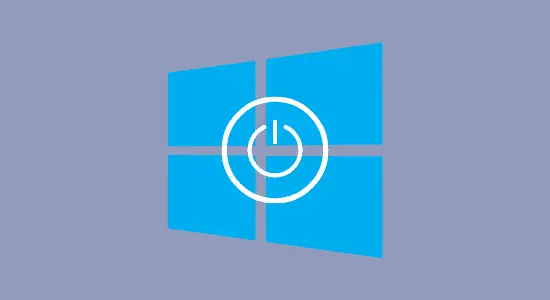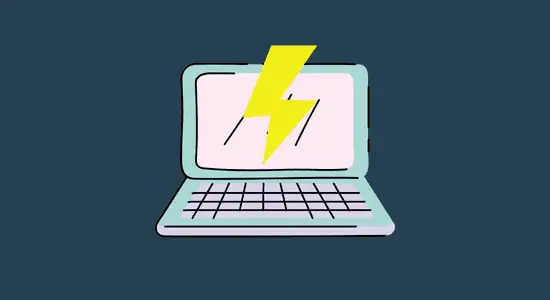Table of Contents Show
Are you looking to know how to turn off automatic updates windows 10 temporary and permanently? Windows 10 users are always urged to keep their systems up to date. However, there are a number of reasons why you might want to turn off automatic updates. One reason is that it can sometimes cause problems.
For example, if you’re on a limited data plan, automatic updates can eat up your bandwidth and an update might crash your computer as it might not be able to complete or make it unable to start up. Another reason is that some updates require restarting your computer and you might not be able to do anything else until the update is complete.
This can be a problem if you’re in the middle of working on something important. Finally, some people simply don’t want their computer to upgrade automatically without asking them first. If this is what you want, then it’s easy to disable automatic updates temporary or permanently in your operating system.
How to disable automatic updates through Windows Services
Windows 10 is a great operating system, but there are some potential security and stability problems with disabling automatic updates. If you decide you don’t want to install it automatically, you can disable them.
Here’s how to do it:
Step 1: Click on start menu or click on the search icon.
Step 2: Type in “Run” and press enter, then type “services.msc” and press OK.

Step 3: Scroll down until you find “Windows Update.” Right-click it and choose “Properties.”

Step 4: A smaller window pop up will open. Hover to the drop-down menu at Startup Type and then change it to “Disabled” which will turn off and stop the auto-updates or make it Manual if only you want to install them yourself. Click “Apply” and OK. That’s it.

Disabling can cause security problems because your computer may not have the latest protection against viruses and other threats. It can also cause stability problems because your computer may not have the latest drivers and other software needed to run properly.
If you do disable automatic updates, be sure to periodically check for upgrades manually and install them as soon as possible. This will help keep your computer safe and running smoothly.
How to stop windows 10 auto update in the Settings app
Windows 10 is a great operating system, but there are some features that people don’t like. One such feature is the automatic upgrading. Some people don’t want their computer to automatically update without their permission. Luckily, there is a way to pause the updates instead of disabling them permanently. You can change your Windows Update settings in two ways:
Method 1:
Step 1: Open the Settings app from start menu.

Step 2: Click on Update & Security, then click the Advanced options link at the bottom.

Step 3: Toggle the grey buttons to blue color to stop windows auto updates.

Method 2:
1. Open the Settings app by clicking the Start menu and click on the gear icon. Then click Update & security.
2. Select Windows Update in the left pane. You can pause or stop auto updates for 7 days by clicking on Pause updates for 7 more days option.

3. From here Windows 10 will let you know when update will resume back again.
4. You can also extend the days up to 35 days by clicking Advanced options > Paused updates and then choose the date you want.

How to disable windows 10 update permanently using Group Policy
Windows 10 comes with a Local Group Policy Editor that allows you to tweak many of the system’s settings. Among the options are policies to disable some automatic upgrades, or to change how they’re handled. You can use Group Policy to prevent operating system from downloading new software automatically, delay them so that they are not installed immediately, or choose which types of updates are applied to devices.
1) Open the Group Policy Editor by typing “gpedit.msc” into the start menu search bar and pressing enter or open the Run command by pressing WIN + R and type it in to open the group policy editor.
2) Now navigate to this path Computer Configuration –> Administrative Templates –> Windows Components –> Windows Update.
3) Double-click on “Configure Automatic Updates“.
4) Select the “Disabled” option and then click on the “Apply” and “OK” button.
5) Close the Group Policy Editor window.
6) Restart your computer. After that, this will disable windows update in windows 10 automatically.
How to turn off automatic updates via Blocker
Windows Update Blocker is a third-party tool that lets you easily block or allow specific software updates and drivers from being installed on your computer. The program can be downloaded here, but it only runs on Windows 7 or later versions.
You can avoid tweaking the operating system settings every time you want to turn automatic updates on or off by installing this free program (which opens in a new tab).
Here’s how to use it.
1. Download free Windows Update Blocker.
2. Right-click the downloaded file and Extract to run the program.
4. Next is at the opening program, simply click on “Disable Updates” and click Apply Now. This is going to disable automatic updates in Windows 10, and the Service Status will turn to green from red. Enable updates if you want to reverse the changes.

Why is Windows updating every time I shut down?
Windows is a complex system with many moving parts. When one part of the system changes, it can affect other parts of the system. This is why Windows updates are so important. They help keep the system running smoothly and prevent problems from arising.
Many people find operating system updates to be inconvenient and intrusive. They don’t understand why the system needs to be updated so often. But it is necessary to keep the system running properly. If you’re not a fan of Windows 10 automatically updating every time you shut down your computer, there is a way to disable it.
However, it is not recommend doing this, as it leaves your computer vulnerable to potential attacks. Instead, we suggest adjusting your settings so that your computer will only update automatically when you’re not using it. This way, you can still take advantage of the automatic updates without having them interrupt your work or daily routine.
How to turn off automatic updates windows 10 FAQ’s
Should I turn off Windows 10 updates?
The answer is: it depends. If you have a desktop computer that isn’t used for anything important, then you can probably afford to disable updates permanently. But if you have a laptop that you use for work or school, then you should probably keep the updates turned on.
That’s because the updates often include security patches, which can protect your computer from hackers and malware. And if your computer is infected with malware, it can cause all sorts of problems – from slowing down your computer to stealing your personal information.
Can you skip Windows updates?
The answer is yes, but it’s not recommended. Skipping operating system updates leaves your device vulnerable to attacks. It’s also important to note that Microsoft may not support your device if it’s not running the latest version of Windows.
If you do choose to skip Windows updates, be sure to stay informed about the latest security threats and install any necessary patches as soon as possible.
Why does Windows 10 keep trying to update?
This can be very frustrating, especially if you have a slow internet connection or you’re not near an outlet. So why does Windows 10 keep trying to update?
One reason is that Microsoft wants all users to be on the latest version of Windows. By forcing updates, Microsoft can ensure that as many people as possible are using the most up-to-date software.
Another reason is that updates often include security fixes and other important improvements. By not updating your computer, you’re leaving yourself vulnerable to attacks from hackers and other cybercriminals. So, should you just give in and let Windows 10 update itself? Not necessarily.
Conclusion
Windows 10 provides a variety of ways on how to turn off automatic update’s windows 10. By following the instructions in this article, you can temporary and permanently disable or enable automatic updates as you see fit. Keep in mind that disabling them may leave your computer vulnerable to security risks, so be sure to weigh the pros and cons before making a decision. Thanks for reading! check this out How to turn Windows Defender off – A Step-by-Step Guide












